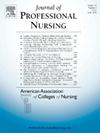弥合多样性差距:利用学习的社会决定因素来支持护理学生的成功
IF 2.9
3区 医学
Q1 NURSING
引用次数: 0
摘要
尽管几十年来一直在努力增加护理人员的多样性,但患者人口和护理人员人口统计之间仍然存在差距。强调NCLEX通过率作为项目质量指标,结合系统障碍,产生了影响护理教育录取和发展政策的复杂挑战。有证据表明,这些因素对代表性不足的少数民族(URM)学生的影响不成比例,影响了学业成功和劳动力多样性。方法借鉴医疗保健在解决健康的社会决定因素方面的成功转型,本文提供了基于证据的干预措施,以解决学习的社会决定因素(SDOL),以支持URM学生的成功并改善护理人员的多样性。这些适应性强的干预措施可以根据项目资源有选择地实施,包括创建包容性文化、满足基本需求、增强学生自决、培养成长心态和培养批判性思维技能的综合战略。结论护理项目可以利用特殊学习能力干预创造支持性环境,提高所有学生,特别是URM学生的成功。通过将重点从个人缺陷转移到系统障碍,实施这些干预措施有助于维持学术标准,同时推进帮助URM学生在护理教育和实践中取得成功的目标。本文章由计算机程序翻译,如有差异,请以英文原文为准。
Bridging the diversity gap: Leveraging social determinants of learning to support nursing student success
Background
Despite decades of initiatives to increase nursing workforce diversity, gaps persist between patient population and nursing workforce demographics.
Problem
Emphasis on NCLEX pass rates as a program quality indicator, combined with systemic barriers, creates complex challenges that influence admission and progression policies in nursing education. Evidence suggests these factors disproportionately affect underrepresented minority (URM) students, impacting both academic success and workforce diversity.
Approach
Drawing from healthcare's successful transformation in addressing social determinants of health, this article provides evidence-based interventions for addressing Social Determinants of Learning (SDOL) to support URM student success and improve nursing workforce diversity. These adaptable interventions can be implemented selectively based on program resources and include comprehensive strategies for creating inclusive cultures, addressing basic needs, enhancing student self-determination, fostering a growth mindset, and developing critical thinking skills.
Conclusions
Nursing programs can leverage SDOL interventions to create supportive environments that enhance success for all students, particularly URM students. By shifting focus from individual deficits to systemic barriers, implementation of these interventions supports maintenance of academic standards while advancing the goal of helping URM students achieve success in nursing education and practice.
求助全文
通过发布文献求助,成功后即可免费获取论文全文。
去求助
来源期刊
CiteScore
4.80
自引率
8.00%
发文量
153
审稿时长
52 days
期刊介绍:
The Journal will accept articles that focus on baccalaureate and higher degree nursing education, educational research, policy related to education, and education and practice partnerships. Reports of original work, research, reviews, insightful descriptions, and policy papers focusing on baccalaureate and graduate nursing education will be published.

 求助内容:
求助内容: 应助结果提醒方式:
应助结果提醒方式:


